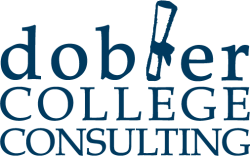Courses and Activities – Making Good Choices
 This time of year, I find myself in conversations about courses and activities for the upcoming year. These are interesting discussions as students and I debate the merit of their options as they try to make decisions that make the most sense for them.
This time of year, I find myself in conversations about courses and activities for the upcoming year. These are interesting discussions as students and I debate the merit of their options as they try to make decisions that make the most sense for them.
My advice to them is that their high school curriculum should present as much breadth and depth as possible but that it should also match up with their greatest interests and strengths as well. AP English is a great choice for the student who writes well and wants to be challenged, but is it a better choice than AP calculus or AP chemistry for the student who hopes to be an engineering major?
Admissions counselors will be looking to establish trends in individual subject areas and in a student’s overall academic record.
If you are a nursing applicant, what is your track record in the sciences? If you are a business student, have you taken four full years of math? What about relevant academic electives that your high school offers? Have you taken advantage of them along the way?
You have to read your transcript like an admissions counselor. Pick it apart, honestly assess the strengths and weaknesses and make changes where applicable so that whoever reviews it when you apply, has greater confidence in your ability to pursue the major you have checked off on your application. Just keep in mind that everything starts with your core subjects – English, math, science, social studies and foreign language. With so many college students changing majors, admissions counselors are first and foremost looking for academic rigor across all subjects.
When it comes to activities, the same rule generally applies. If you are an aspiring business major, have you joined DECA or FBLA? If you want to go into criminal justice or paramedicine, have you taken an EMT course and earned your license? Accounting majors, have you shadowed local accountants and learned more about the nuances of their work when it’s not tax season?
Even if you are undecided on what you may want to major in – and let’s be honest, whether you want to admit it or not, that’s most of you – it is better for you to show a depth of involvement in one or two activities that really mean something to you rather than lining up your resume with twenty clubs and organizations that hold little to no meaning for you as you head into your senior year.
Your application and supporting materials should reflect who you are as a student and, more importantly, as a person. Be true to you, invest your time wisely and, when in doubt, make good choices with how you spend your time.
Will all of this look good on college applications? Possibly.
But the greater good here is that you will have gained a greater understanding and appreciation for who you are, what’s important to you and how you want to live your life. There’s a lot to like about that.
If you would like some assistance with your college search or financial aid process, contact me today for a free consultation.
Here’s what other families like yours are saying about how Dobler College Consulting made a difference for them.

 Recently at my house, questions like, “Where are we going on vacation this year?” and, “Is there anything new we want to try with the boys over the summer?” have taken over our dinnertime conversations. Luckily, we have already answered both questions when we scheduled a trip to take our two boys, Brady (7) and Kasen (3), to Disney in late August.
Recently at my house, questions like, “Where are we going on vacation this year?” and, “Is there anything new we want to try with the boys over the summer?” have taken over our dinnertime conversations. Luckily, we have already answered both questions when we scheduled a trip to take our two boys, Brady (7) and Kasen (3), to Disney in late August. If you’re fortunate enough to have been admitted to multiple colleges you will now be faced with the task of deciding which one is going to be the most affordable option. If you’ve
If you’re fortunate enough to have been admitted to multiple colleges you will now be faced with the task of deciding which one is going to be the most affordable option. If you’ve 
